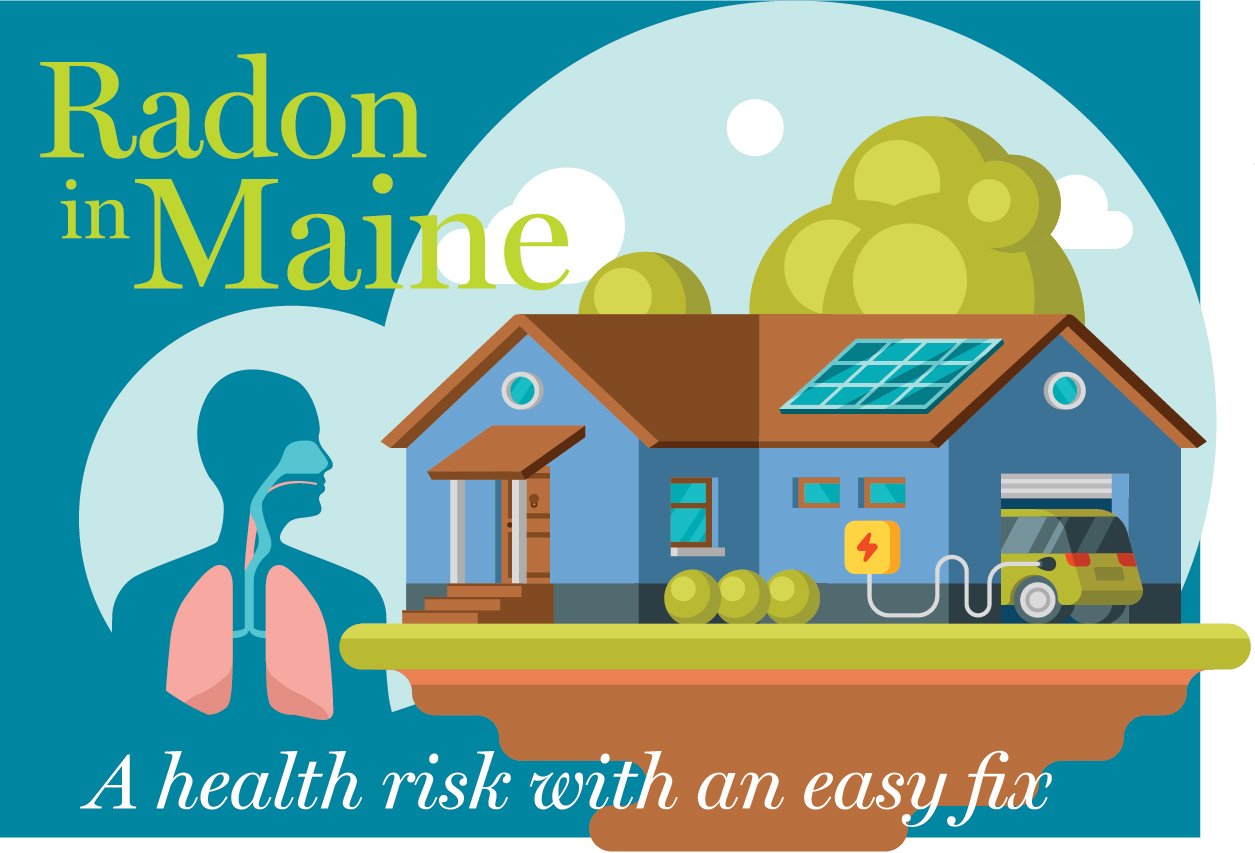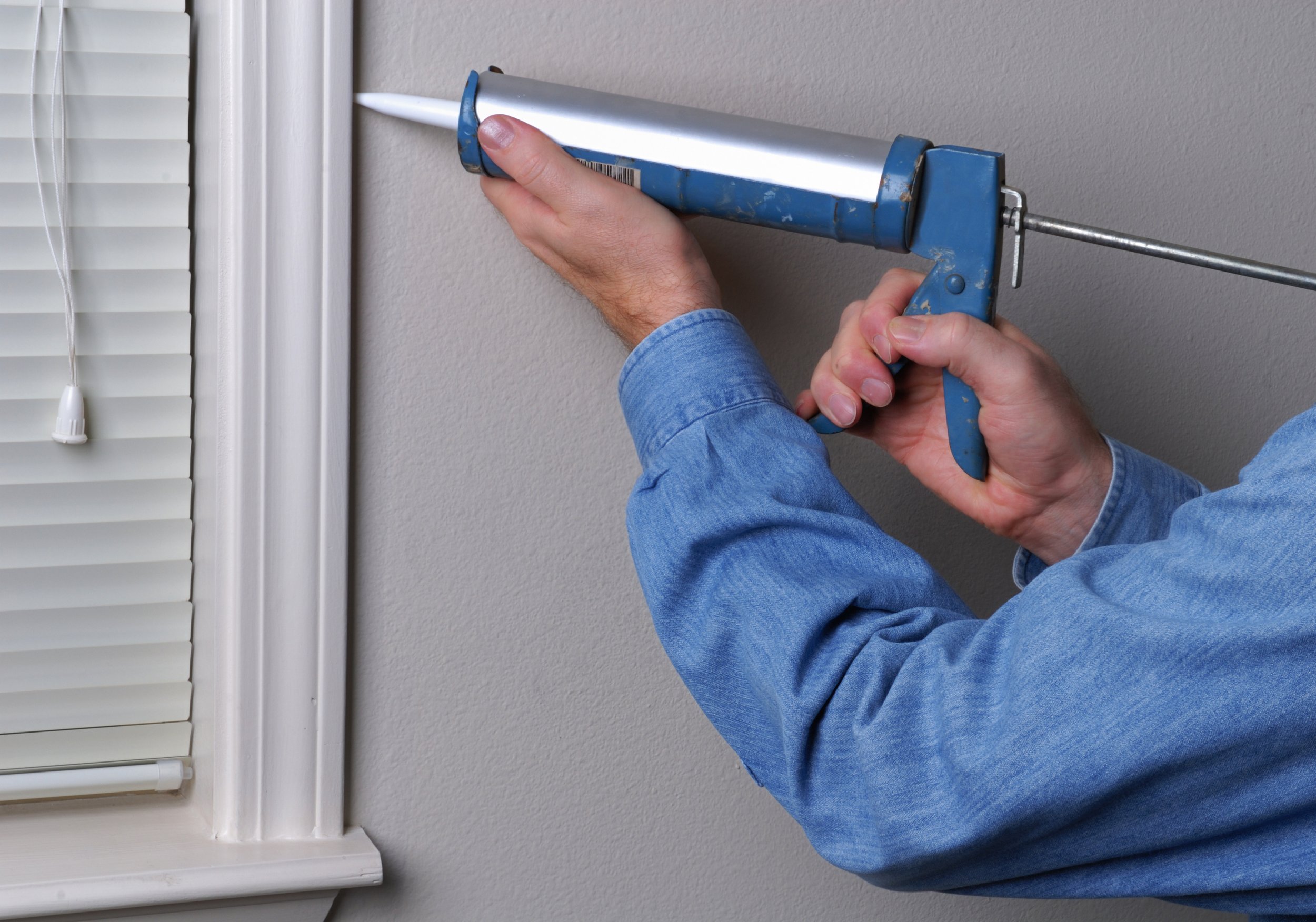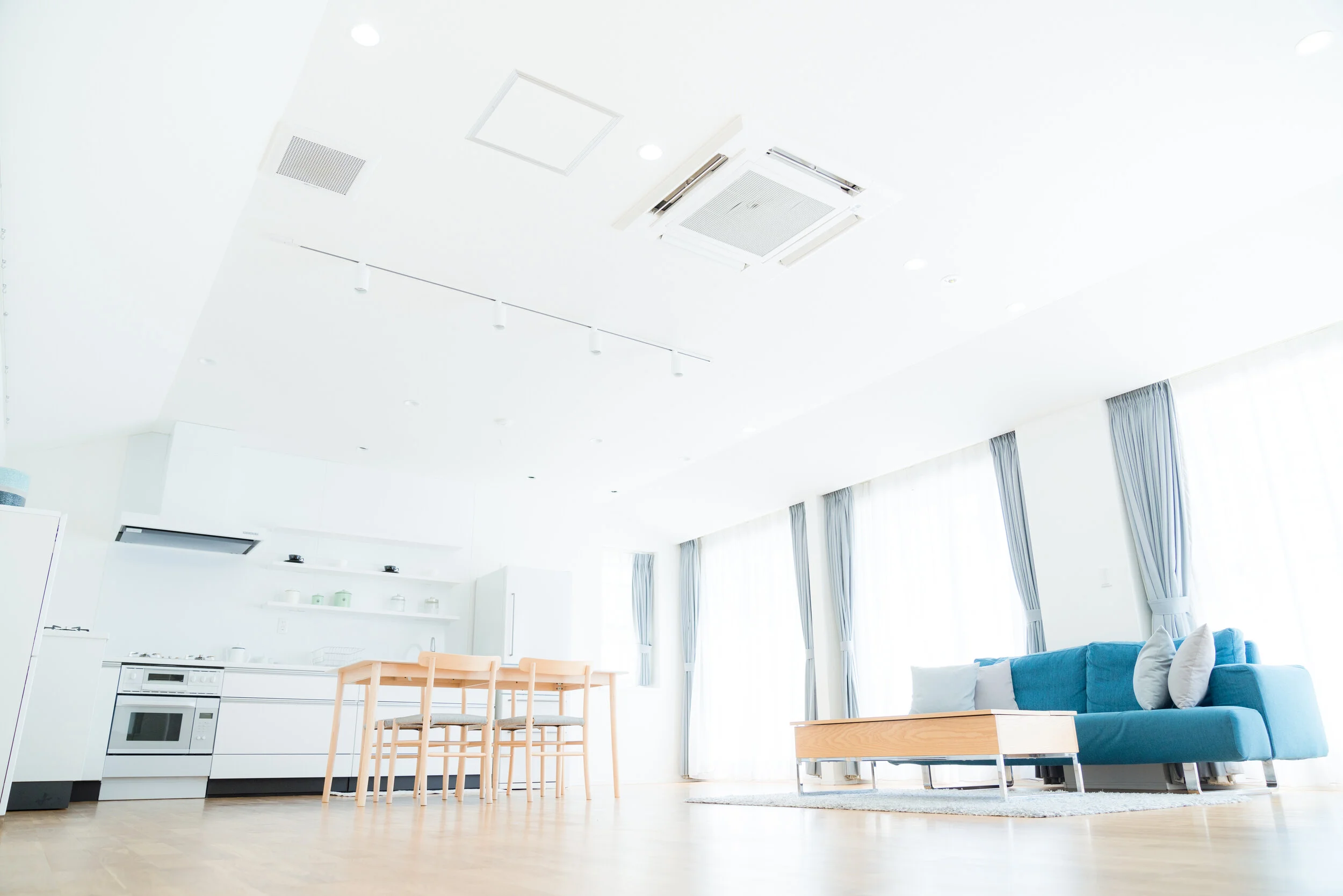Why exhaust-only whole-house ventilation isn't "enough"
Indoor air corner
By Christine G. Crocker
Executive Director, Maine Indoor Air Quality Council
I’D LIKE TO START THIS ISSUE’S “Indoor Air Corner” with a bold statement: “All homes in Maine need ventilation, period.” Why I say this has a lot to do with what we’ve learned recently about indoor air quality and the role ventilation plays in creating healthier indoor environments for occupants.
The COVID-19 pandemic raised a lot of awareness of the presence of pollutants in the indoor environment. The levels of indoor pollutants—including radon, lead, asbestos, particulate matter, moisture/mold, volatile organic compounds (VOCs), carbon monoxide and other combustion pollutants, pest/pet dander, viruses and bacteria—are often 2 to 5 times higher (and can quickly become 100 times higher) than outdoor levels. Studies have identified a broad range of adverse health effects and symptoms from exposure to indoor pollutants, including headaches, fatigue, nausea, aggravation of asthma and allergies, transmission of infections and respiratory diseases, life-threatening poisonings, and cancer. (Maine’s lung cancer rate for both men and women is significantly higher than the rest of the United States.) If you ask yourself where you spend most of your time, the answer is likely to be “indoors.” In fact, 30% of your entire lifetime is probably spent not only indoors but in your bedroom.
What does this have to do with ventilation? Ventilation is the primary tool in the indoor air quality toolbox to deal with pollutants that get trapped indoors. Ventilation is a two-part process: (1) it brings in fresh air for the people inside, and (2) it exhausts out the pollutants before they can make people sick. This two-part process creates air flow across a space in a planned—and measurable—way, keeping air moving in one way and out the other, capturing many pollutants as it goes.
WHY VENTILATION IS SO CRITICAL FOR MAINE
The state of Maine is making significant investments in our housing stock, supporting weatherization of existing homes, improving codes and standards for new construction, and providing financial incentives for heating and cooling systems that reduce the use of fossil fuels. These strategies are designed to reduce energy consumption by making homes more affordable to heat and cool and to reduce greenhouse gas emissions. How does ventilation fit into this puzzle? Given what we know about indoor pollution and its impact on human health, it is critical to consider how we should be ventilating Maine homes to achieve all goals: energy efficiency, climate action and public health.
Maine’s building codes no longer allow homes to be constructed without mechanical ventilation. This is because tightly weatherized and insulated homes require mechanical strategies (via electric fan units) to bring in fresh air for building occupants and exhaust out pollutants trapped indoors. Of the two mechanical ventilation strategies—exhaust-only ventilation and energy-recovery ventilation—exhaust-only whole-house ventilation is by far the most common strategy used here in Maine.
A quick definition: There is a difference between whole-house ventilation and local exhaust ventilation (also called spot ventilation). Spot ventilation is used in kitchens and bathrooms and is required in all new homes as part of Maine’s building code. Spot ventilation is designed to get rid of moisture, particulate matter and combustion pollutants right where they are generated. Whole-house exhaust-only ventilation refers to exhaust fans that are used to provide general ventilation to the home.
Is exhaust-only whole-house ventilation still an appropriate choice when considering ventilating a home today? There are many challenges that point to exhaust-only ventilation not being enough:
Exhaust-only whole-house ventilation only goes one way: out. It is not designed to create air flow across an interior space.
Despite its name, exhaust-only whole-house ventilation cannot remove pollutants from your entire home. It is limited to the areas where the fans and or appliances with mechanical exhaust are located and may only dilute but not remove pollutants from other areas.
The volume of air in a home must remain constant. When air is blown out of a home, air from the outdoors must come in, from somewhere. This is called make-up air. The make-up air in an exhaust-only whole-house ventilation strategy is uncontrolled: fresh outdoor air will leak in wherever it finds an opening. There is absolutely no guarantee of fresh air delivery to areas where people spend most of their time, such as bedrooms and living rooms.
With exhaust-only whole-house systems, there is a risk of pulling harmful pollutants into living spaces, such as combustion gases from furnaces and heaters, carbon monoxide from an attached garage, or soil gases such as radon from underneath the foundation slab.
Exhaust-only whole-house ventilation is energy-inefficient. Exhaust-only systems suck outdoor air into a home through any available small cracks or openings. All the energy used to warm indoor air is wasted when that air leaks out or is mechanically exhausted from your home, and all the incoming fresh air requires extra energy to heat it to comfortable levels. Compare this to an energy-recovery ventilation system, which allows for the transfer of outgoing heat to the incoming cold air stream, warming it before delivery indoors.
We’ve heard the argument that the energy loss from exhaust-only strategies is minimal because the fans are only used occasionally to exhaust air out of the home. But consider this: If a fan isn’t running, it isn’t ventilating.
If the definition of ventilation includes purposeful movement of air both into and out of a home, is exhaustonly whole-house ventilation even really “ventilation”?
Signs of inadequate ventilation in your home
How do you know if you have enough ventilation to exhaust out pollutants and provide fresh air to you and your family? Even though you can’t see ventilation, there are some tell-tale red flags when there isn’t enough ventilation in your home:
🚩 You don’t have both a kitchen fan and a bath fan.
🚩Your kitchen fan and/or your bath fan are not vented outdoors.
🚩You don’t use your kitchen or bath fan every time you cook or take a bath/shower.
🚩Your smoke alarms go off regularly when you cook.
🚩You have odors in the home that linger for more than an hour or two.
🚩You often see condensation on your windows.
🚩You see mold/mildew on your window frames or in other parts of your home.
🚩You frequently engage in hobbies that create a lot of odors or chemicals indoors in an unventilated area.
🚩Your indoor air quality monitor (if you have one) consistently shows elevated levels of carbon dioxide (CO2), VOCs, particulate matter or other pollutants.
THE BETTER WHOLE-HOUSE VENTILATION ALTERNATIVE
Instead of relying on exhaust-only strategies, consider using a balanced recovery ventilation system, the most reliable and energy-efficient solution for providing whole-house ventilation. Recovery ventilation is a simple network of ducts with a central ventilation unit, which delivers fresh air to multiple areas of your home such as living rooms and bedrooms and removes stale air and pollutants out of multiple areas of your home (kitchens, bathrooms, living areas). The system is extremely energy-efficient because outgoing warm air passes next to incoming fresh air within the central ventilation unit itself, thus pre-warming that air with little added energy cost. As much as 60-95% of the energy needed to heat air to comfortable indoor temperatures is recaptured and transferred during this process. Balanced recovery ventilation is a great solution for both new and existing homes—even leaky older homes.
I’D LIKE TO END THIS ISSUE’S “Indoor Air Corner” with a bold statement: “All homes in Maine need ventilation, period.”
You can find more information about indoor air quality and strategies to make your home healthier on the Maine Indoor Air Quality Council website: maineindoorair.org.
Read More: Indoor Air Corner
This article appeared in the Spring 2024 edition of Green & Healthy Maine HOMES. Subscribe today!
Find Maine experts that specialize in healthy, efficient homes in the Green Homes Business Directory.






















